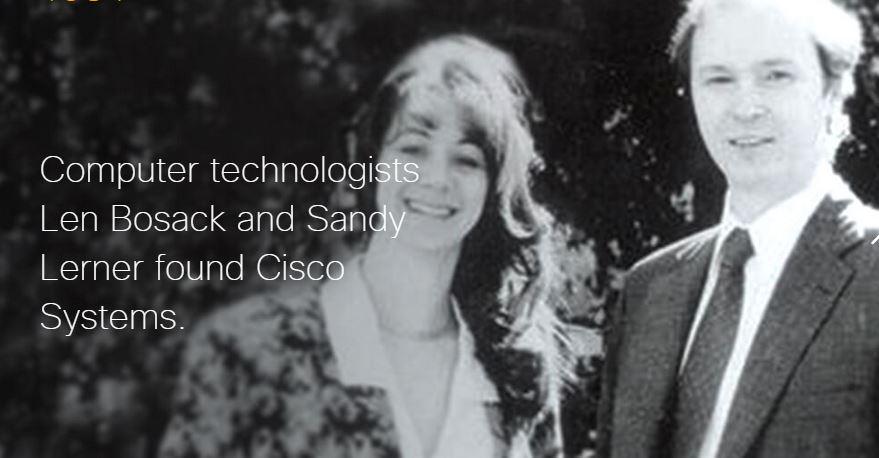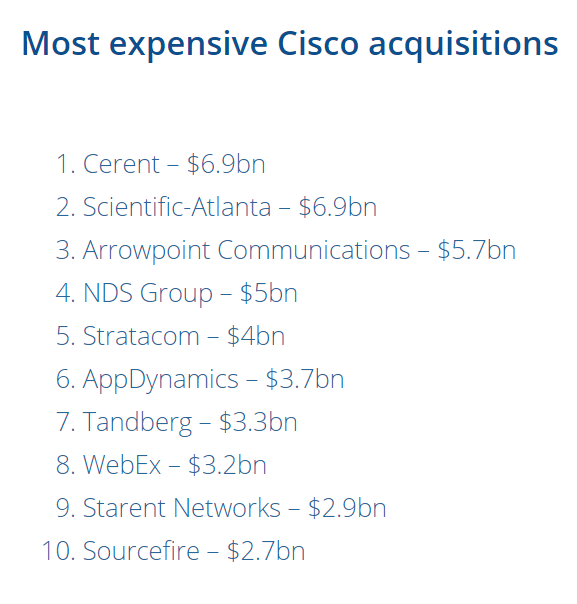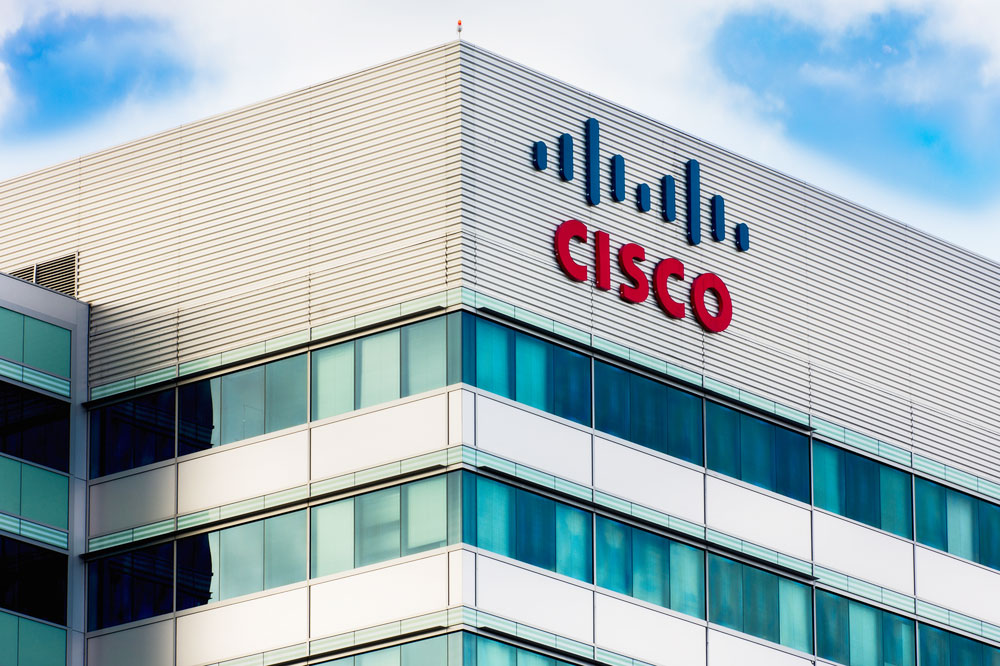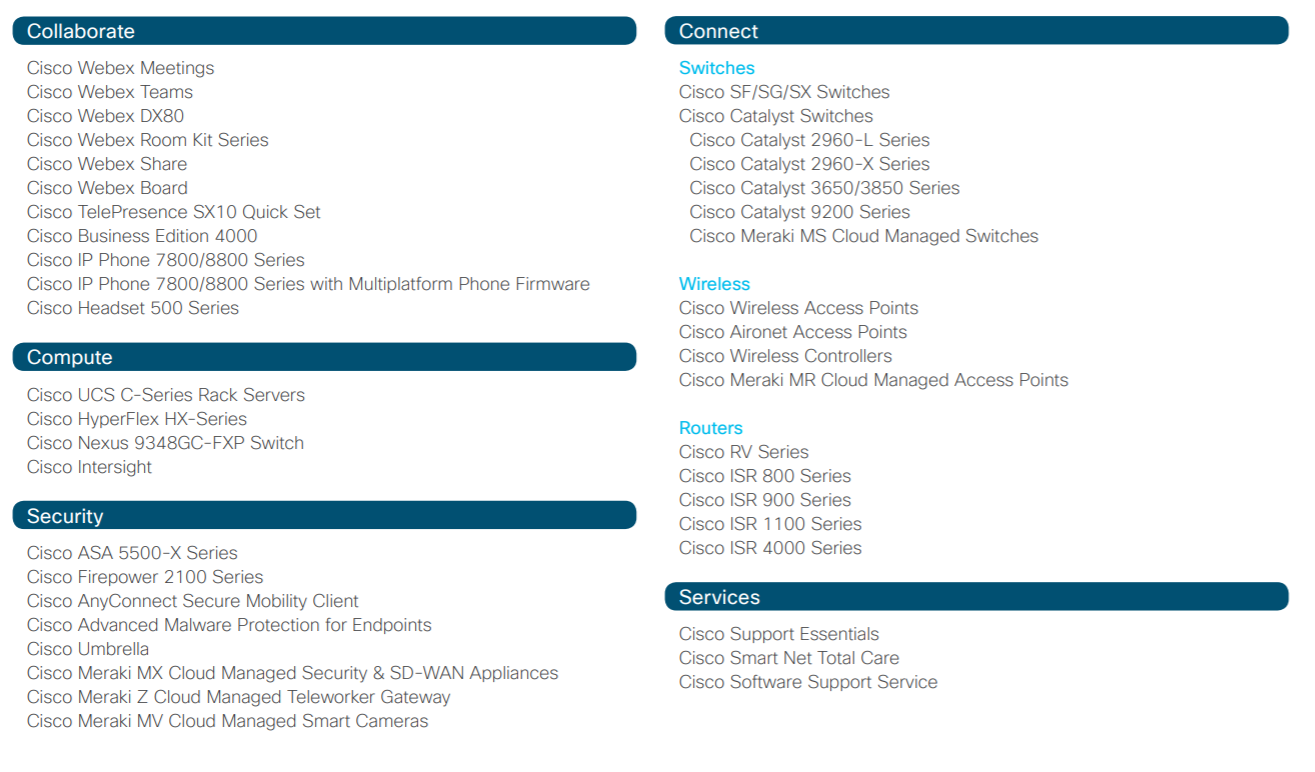Cisco was founded by two married couples, Sandy Lerner and Len Bosack, two specialists at Stanford University in late 1984. The router that was built at Stanford University was commercialized by them. Lerner and Bosack led Cisco until 1990, when it was listed on the NASDAQ public exchange stock.

Cisco was producing only one product until 1993 when Boeing decided to develop a network using switches from Crescendo Systems. After acquiring Crescendo for $ 97 Million, Cisco becomes a networking company from a router company.
Cisco continued to expand its computer networking product sales with an increase from $70 million in 1991 to more than $18.9 billion in 2000. Cisco achieved remarkable growth by setting standards for its networking products through its proprietary IOS which runs on all Cisco routing devices.
Cisco continuously widened its area of focus. It has targeted telecommunication companies, the home market, and Internet Service Providers (ISPs). In 1997 Cisco allied with telecommunication equipment company Alcatel to develop products for the telecommunication industry and Internet Service Providers (ISPs). Cisco also invested in wireless equipment and optical switching companies to enter those markets.
History of Cisco Sytems
Cisco was developed with the goal of facilitating communication. In 1984, the founders Len Bosack and Sandy Lerner worked at Stanford University to link separate networks in two separate campus buildings. After running the network cables between the two houses, and connecting them to the bridges and then the routers, both realized that to make the disparate networks speak to each other and exchange information, a technology was required that could manage the various local area protocols. So Bosack and Lerner invented the multi-protocol router that they introduced in 1986. By 1989, with just three products and 111 employees, Cisco’s revenue was $27 million.
With the advent of the 1990s and the beginning of widespread use of the Internet, Cisco was granted its first patent for its system and equipment for routing communication between computer networks. Thirty-three patents and several leading-edge products later, and with offices worldwide, the company released the first voice-over-IP and Fax-over-IP products in 1997 as well as a line of cable data products. The next year, Cisco launched its first cable modem to the small office, the home, and telecommuting and Gigabit Ethernet and Layer 3 routing in switches.
Products Portfolio of Cisco
Mergers and Acquisitions of Cisco
Over the last 3 years, Cisco has been making acquisitions at a phenomenal rate. The influx of new and exciting tech companies joining forces with IT big-fish, Cisco, has kept them at the front and center of innovation.

Also Read: Are You Sure It Isn’t Photoshopped? – The Journey Of Adobe Systems Inc.
Strategies for growth for Cisco
Product innovation: Basically, Cisco is a product innovation company but it pays attention to customer relationships as well. Cisco’s strategy is to find an end-to-end single-vendor networking solution. That is why it offers a broad range of internet hardware products and the Internet Operating System (IOS) which allows network services on networking applications. Cisco’s goal is to sustain its leadership in key technologies, thus remaining as first or second in all the areas of the market where it operates.
Operations: Cisco began its life in the emerging market as IP based network equipment. It gained advantages over other companies in the market such as Wellfleet because of its proprietary high standards. This standard called IGRP (Internet Gateway Routing Protocol) as an alternative to the open
standard Routing Information Protocol and offered more advantages such as multipath routing.
Cisco was focused on producing routers initially but the customers were asking for hubs as well.
The combination of routers and hubs improved the performance of local area networks. Cisco had
developed the IOS that was running on hubs and routers. Cisco cooperated with hub vendors such
as SynOptics to gain access to large corporate accounts. Cisco licensed IOS (Internet Operating
System) to hub vendors to ensure compatibility between rooters. In that way, Cisco highlighted its
IOS with the purpose to be adopted from networking companies. In time, customers started to
replace the hubs with the router which provides more features and capabilities.
Customer Relations and Support: Cisco is a product-oriented company but it puts emphasis on customer relationships to reach new markets. Its organizational structure is designed heavily based on customer relationships.
Although Cisco is aware of the importance of the customer relationship, it does not handle all the marketing, distribution, and support functions internally. In 1996, when Cisco decided to expand its market by including small and medium businesses from relying mainly on direct sales to develop two-tier channel resellers.
The use of the internet and e-commerce: The organizational model and product innovation strategy at the organization is supported by the use of the internet and e-commerce. It refers to this approach as a Global networked business model. It is defined by the company as following: “… any size company that strategically uses information and communications to build a network of strong, interactive relationships with all its key constituencies, opening the corporate information infrastructure and leveraging the network to achieve a competitive advantage”.
According to the definition, this model is able to do much more than accepting orders online.
Also Read: Marketing Strategy and Marketing Mix of Cisco
To read more content like this, subscribe to our newsletter.




